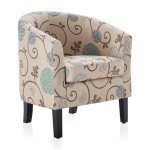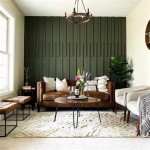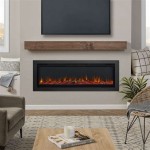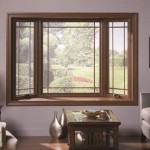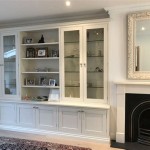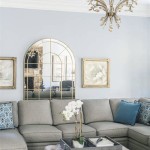Traditional Living Room Table Lamps: Illuminating Classic Style
Table lamps are integral components of living room décor, serving both functional and aesthetic purposes. Traditional living room table lamps, in particular, provide illumination while simultaneously contributing to the overall atmosphere and stylistic cohesion of a traditionally designed space. These lamps often incorporate classic design elements, time-honored materials, and sophisticated finishes, making them more than just light sources; they are key contributors to the room's visual appeal and ambiance.
The selection of a traditional table lamp for a living room requires careful consideration of various factors, including the lamp's style, size, material, shade, and the type of light it emits. A well-chosen lamp can enhance the room's existing features, improve its functionality, and create a warm and inviting environment. Conversely, a poorly selected lamp can disrupt the room's aesthetic balance and negatively impact its overall appeal.
Key Design Elements of Traditional Table Lamps
Traditional table lamps are characterized by a set of distinctive design elements that distinguish them from more contemporary or modern styles. These elements frequently draw inspiration from historical periods and movements, such as the Victorian era, the Art Deco period, or classic European styles. The incorporation of these historical influences contributes to the lamp's timeless appeal and its ability to seamlessly integrate into traditionally decorated living rooms.
One prevalent design element is the use of ornate detailing. This may manifest in the form of intricate carvings, embossed patterns, or the application of gilding or other decorative finishes. These details are often found on the lamp's base, adding visual interest and a touch of luxury. The level of ornamentation can vary, ranging from subtle embellishments to more elaborate and intricate designs. The choice often depends on the overall aesthetic of the room and the desired level of formality.
Another defining characteristic of traditional table lamps is the use of classic shapes and silhouettes. Common shapes include urn-shaped bases, candlestick-style designs, and column-shaped bases. These shapes evoke a sense of history and elegance. The overall form of the lamp is carefully considered to ensure that it complements the existing furniture and architectural elements within the living room. The size and proportions of the lamp are also crucial, as they must be balanced with the surrounding space to create a harmonious visual effect.
Materials play a significant role in defining the aesthetic of traditional table lamps. Common materials include brass, bronze, wood, ceramic, and crystal. Brass and bronze are often used for their durability and their ability to be finished with a variety of patinas, lending the lamp an antique or aged appearance. Wood can be used to create warm and inviting bases, often with intricate carvings or detailed moldings. Ceramic lamps offer a wide range of colors and patterns, allowing for greater design flexibility. Crystal lamps add a touch of glamour and sophistication, reflecting light and creating a sparkling effect.
The lamp shade is an equally important component of a traditional table lamp. Common shade materials include fabric, such as silk, linen, or parchment. Fabric shades diffuse the light, creating a softer and more ambient glow. The shape of the shade is also carefully considered. Common shapes include empire shades, bell shades, and drum shades. The size and shape of the shade should be proportional to the base, creating a balanced and visually appealing composition. The color of the shade can also impact the overall aesthetic, with neutral colors such as cream, ivory, or beige being common choices for traditional lamps.
Factors to Consider When Selecting a Traditional Table Lamp
When selecting a traditional table lamp for a living room, several factors should be taken into account to ensure that the lamp complements the existing décor and meets the functional needs of the space. These factors include the lamp's style, size, placement, and the type of light it emits. A careful consideration of these elements will ensure that the lamp contributes positively to the room's overall aesthetic and functionality.
The style of the lamp should align with the overall aesthetic of the living room. If the room is decorated in a formal and traditional style, a lamp with ornate detailing, classic shapes, and luxurious materials would be appropriate. Conversely, if the room has a more relaxed or informal traditional style, a lamp with simpler lines, natural materials, and a less ornate design may be more suitable. The key is to choose a lamp that complements the existing furniture, accessories, and architectural elements in the room.
The size of the lamp is another crucial consideration. The lamp should be appropriately sized for the table or surface on which it will be placed. A lamp that is too small will appear insignificant and may not provide adequate illumination. A lamp that is too large will overpower the space and may create a cluttered or unbalanced look. As a general guideline, the height of the lamp should be approximately one-and-a-half times the height of the table on which it sits. The width of the shade should also be proportional to the base, ensuring a balanced and visually appealing composition.
The placement of the lamp is also an important factor to consider. Table lamps are typically placed on side tables, end tables, or console tables. The placement of the lamp should be strategic, taking into account the functional needs of the space. For example, a lamp placed next to a sofa or armchair can provide task lighting for reading or other activities. A lamp placed on a console table can provide ambient lighting and create a welcoming atmosphere. The placement of the lamp should also consider the availability of electrical outlets and the need for cord management.
The type of light emitted by the lamp is another important consideration. Traditional table lamps typically use incandescent bulbs, LED bulbs, or halogen bulbs. Incandescent bulbs provide a warm and inviting glow, but they are less energy-efficient than LED bulbs. LED bulbs are more energy-efficient and have a longer lifespan, but they may emit a cooler light. Halogen bulbs provide a bright and focused light, but they can generate a significant amount of heat. The choice of bulb should depend on the desired ambiance and the functional needs of the space. The wattage of the bulb should also be considered, as it will affect the brightness of the light. A dimmer switch can be used to adjust the intensity of the light, allowing for greater control over the room's ambiance.
Maintaining and Caring for Traditional Table Lamps
Proper maintenance and care are essential for preserving the beauty and functionality of traditional table lamps. Regular cleaning and timely repairs can extend the lifespan of the lamp and ensure that it continues to enhance the aesthetic of the living room. Neglecting maintenance can lead to damage, deterioration, and a reduced lifespan for the lamp.
Regular cleaning is crucial for preventing the accumulation of dust and dirt, which can dull the lamp's finish and reduce its light output. The frequency of cleaning will depend on the environment in which the lamp is located. Lamps in dusty or high-traffic areas may require more frequent cleaning. A soft, dry cloth can be used to wipe down the base and shade of the lamp. For more stubborn dirt or grime, a slightly damp cloth can be used, followed by a dry cloth to remove any moisture. Harsh chemicals or abrasive cleaners should be avoided, as they can damage the lamp's finish.
The lamp shade should also be cleaned regularly. Fabric shades can be vacuumed with a soft brush attachment to remove dust and dirt. For more stubborn stains, a mild detergent can be used, but it is important to test the detergent on an inconspicuous area of the shade first to ensure that it does not cause discoloration or damage. Glass or crystal shades can be cleaned with a glass cleaner, followed by a soft cloth to remove any streaks. It is important to handle glass or crystal shades with care, as they can be fragile and easily broken.
Regular inspection and maintenance of the lamp's electrical components are also essential. The cord should be checked for any signs of damage, such as fraying or cracking. Damaged cords should be replaced immediately to prevent electrical hazards. The socket should also be checked for signs of corrosion or damage. Corroded or damaged sockets should be replaced by a qualified electrician. The bulb should be replaced regularly to ensure optimal light output. When replacing the bulb, it is important to use the correct wattage to avoid overloading the lamp's electrical system.
Proper storage is also important for preserving the condition of traditional table lamps. When the lamp is not in use, it should be stored in a cool, dry place away from direct sunlight and extreme temperatures. The lamp should be covered with a dust cover to protect it from dust and dirt. If the lamp is being stored for an extended period of time, it is recommended to remove the bulb and shade to prevent damage.

Regency Hill Louis Traditional Table Lamps 25 3 4 High Set Of 2 Antique Gold Pleated Bell Shade For Bedroom Living Room Bedside Nightstand Office

Traditional Table Lamps Set Of 2 Broe Curling Leaves For Living Room Bedroom Ebay

The Best Living Room Lamps For A Cozy Classic Look Perfecting Places

Vienna Full Spectrum Rolland Traditional Table Lamps 30 Tall Set Of 2 Antique Brass Crystal Off White Drum Shade For Bedroom Living Room Nightstand

Elstead Sashi Traditional Table Lamp With Tall Empire Shade Kes Ligh

Regency Hill Edgar 29 High Traditional Broe Table Lamps Set Of 2 716t7 Plus

Teardrop Living Room Table Lighting Traditional Crystal 1 Light Gold Night Lamp With 2 Layer Patterned Fabric Shade Clearhalo

Traditional Table Lamps Page 5

Bobomomo Tradition 20 Rustic Table Lamp Set Of 2 For Living Room Bedroom Bedside Desk Lamps Nightstand Vintage Linen Suitable Decorating Small Areas

Classic Table Lamps

